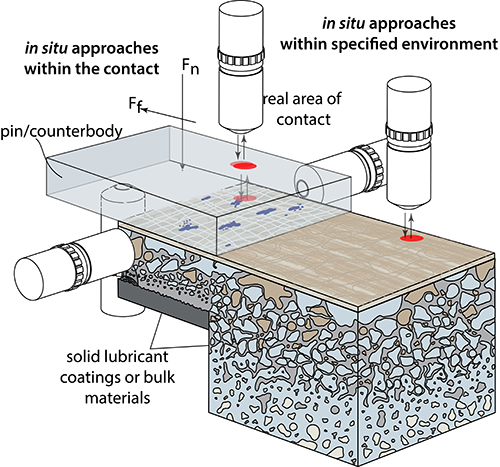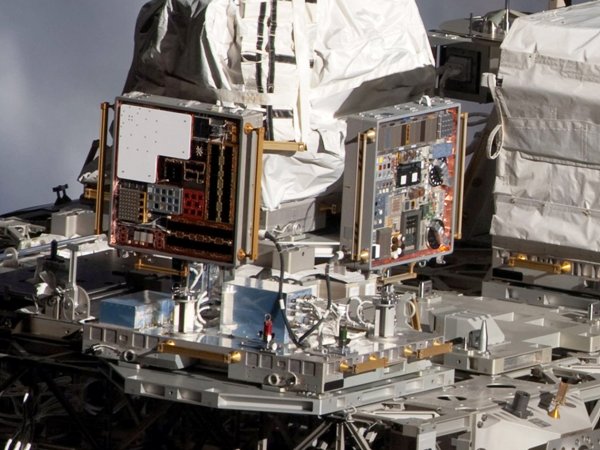Lehigh University
The Tribology Laboratory at Lehigh University
Research
Tribometry and instrumentation
Environmental Studies
Complicating the reliable performance of materials is the interaction between materials and surrounding environmental constituents such as vacuum, gases, or heat/cold for application environments ranging from space to the human body. These environments preclude the use of traditional engineering materials that wear away or otherwise degrade quickly, which continues to challenge design engineers with ever increasing performance demands. In many cases, experiments must be performed in the actual operating environment or in an environement similar to the application environment.
Environmental Tribometers
Environmental constituents can play a large role in the friction and wear of these tribological systems. It is desirable to test these materials in a variety of environments to prove the limitations of the material set and understand more about the composite. Due to the dynamic nature of friction and wear, it is important to consider the many environments that a solid lubricant may be used in and test in conditions as close as possible to that environment. The following tribometers are examples, each designed to test the wear and friction of these polymers in various environments.
Example: Vacuum tribometer
A linear reciprocating vacuum tribometer [1, 2] was used to evaluate PTFE/alumina composites at various vacuum pressures.

Example: Environmentally Controlled Tribometer
A linear reciprocating tribometer similar to those previously described by Sawyer and Schmitz [3-5] was designed and built inside of an environmentally controlled glove box. The glove box can be regulated to as low as 5 ppm of O2 and 0.5 % relative humidity under a nitrogen backfill at 23-28 ºC. The glove box can be doped with environmental species, including water at as high as 90% RH. Aside from the environment, all other testing parameters in this test remained the same as the linear reciprocating experiments.
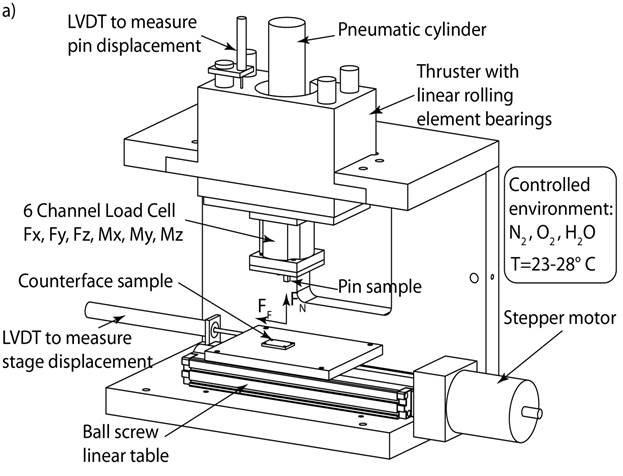
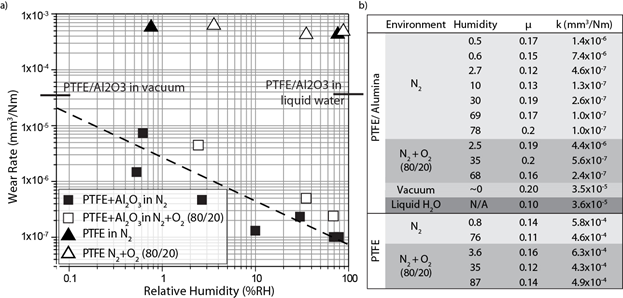
Example: Space tribometer
An opportunity was presented to build tribometers that would be exposed directly to the low earth orbit environment on board the Materials on the International Space Station Experiments (MISSE) series number 7 [7]. MISSE 7 was a group of experiments mounted to the International Space Station (ISS) and exposed directly to the low Earth orbit (LEO) environment.
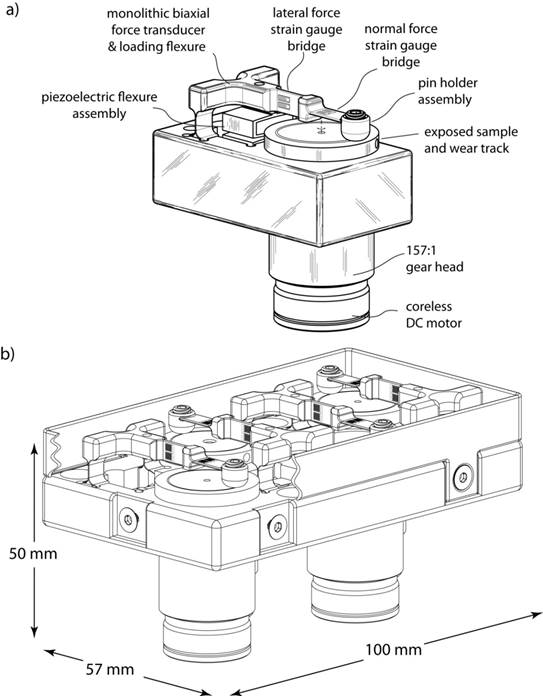
The experiments were exposed to ultrahigh vacuum, temperature fluctuations of -40 to 60ºC, ultraviolet radiation, and atomic oxygen. The experiments are oriented in such a way that the ram experiments are exposed to a high flux of atomic oxygen, while the wake experiments are generally in ultrahigh vacuum [7]. The samples returned to Earth in June 2011, were collected in July 2011 and are currently being analyzed.
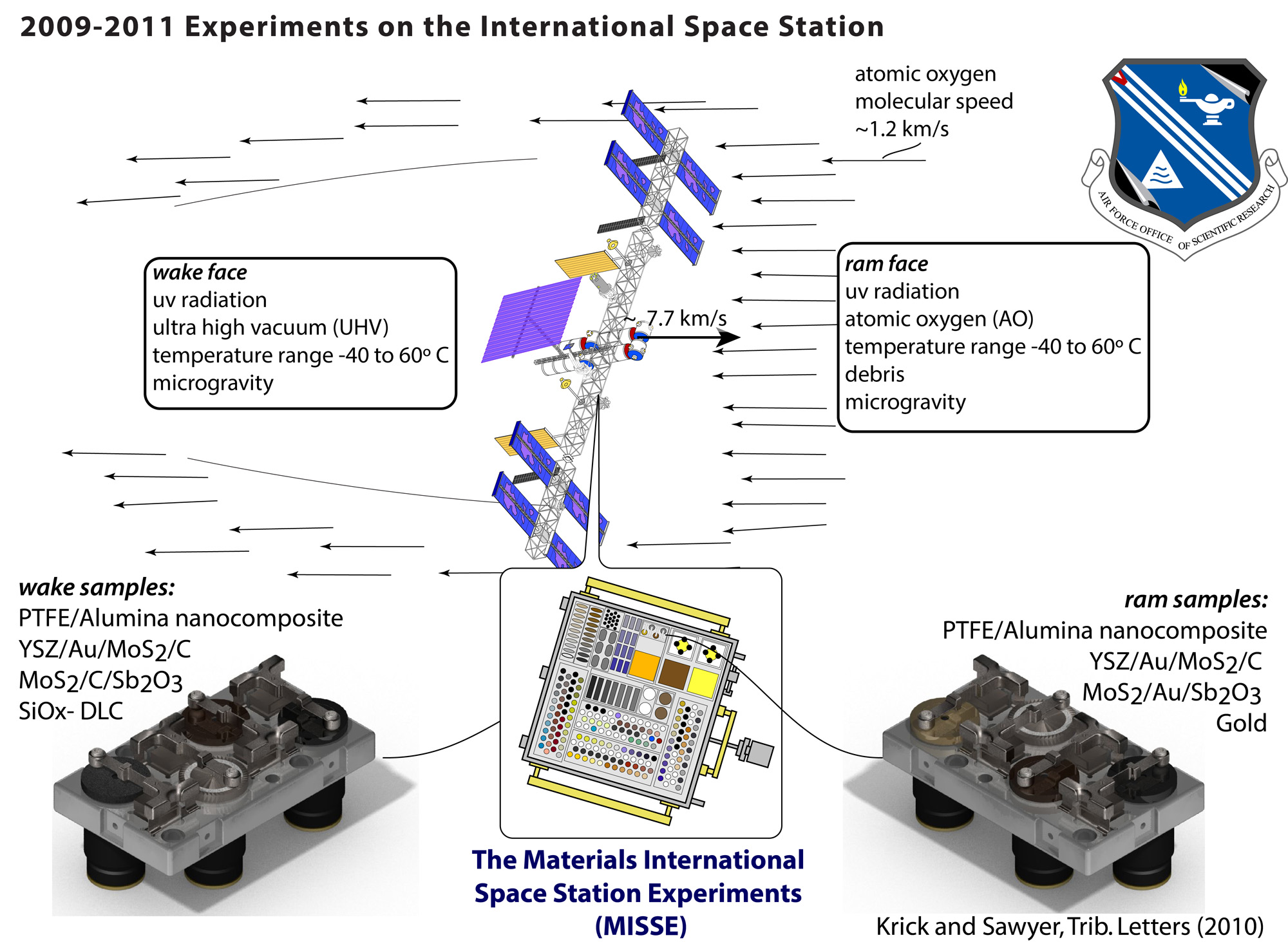
Example: High Temperature Tribometer
1. Colbert, R.S. and W.G. Sawyer, Thermal dependence of the wear of molybdenum disulphide coatings. Wear, 2010. 269(11-12): p. 719-723.
2. Hamilton, M.A., Evaluation of tribological response of molydenum disulphide-based coatings to varying environments, in Mechanical and Aerospace Engineering. 2007, University of Florida: Gainesville, Fl.
3. Sawyer, W.G., et al., A study on the friction and wear behavior of PTFE filled with alumina nanoparticles. Wear, 2003. 254(5-6): p. 573-580.
4. Schmitz, T.L., et al., Wear-rate uncertainty analysis. Journal of Tribology-Transactions of the Asme, 2004. 126(4): p. 802-808.
5. Schmitz, T.L., et al., The difficulty of measuring low friction: Uncertainty analysis for friction coefficient measurements. Journal of Tribology-Transactions of the Asme, 2005. 127(3): p. 673-678.
6. Zhao, X.H., et al., An experimental study of low earth orbit atomic oxygen and ultraviolet radiation effects on a spacecraft material - polytetrafluoroethylene. Polymer Degradation and Stability, 2005. 88(2): p. 275-285.
7. Krick, B.A. and W.G. Sawyer, Space tribometers: design for exposed experiments on orbit. Tribology Letters, 2011. 41(1): p. 303-311.
